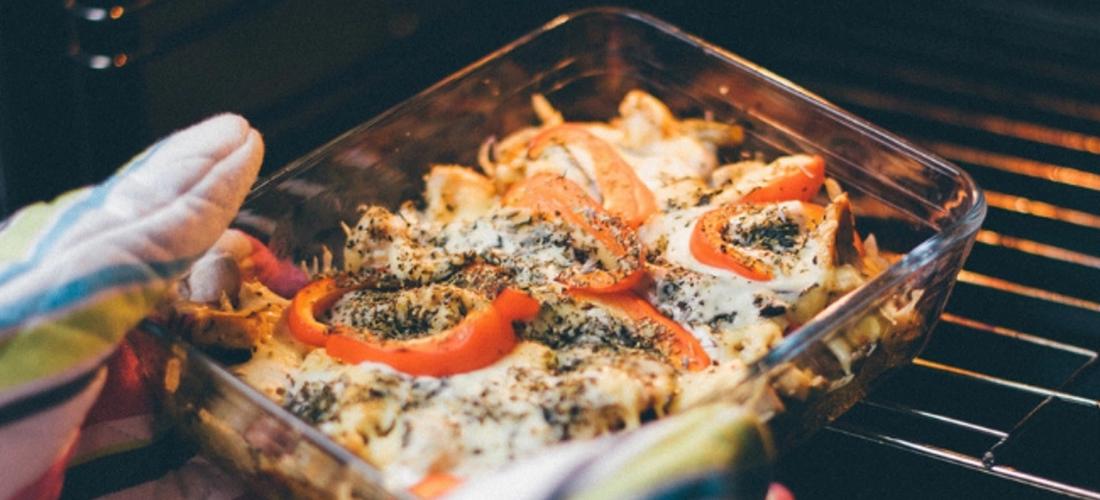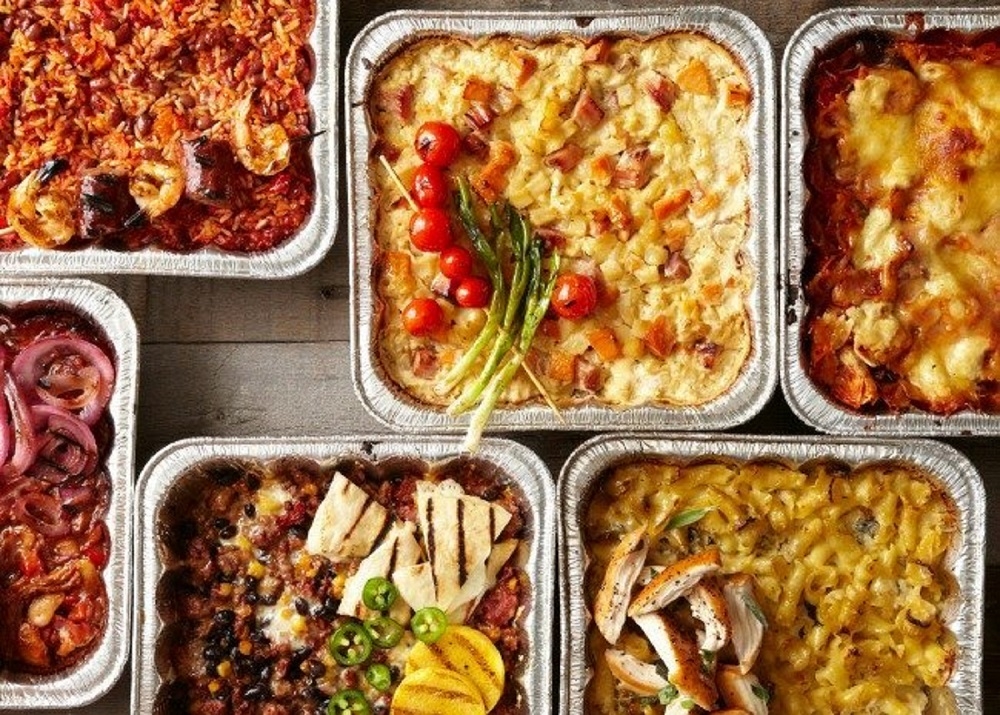9 Tips for Organizing a Meal Train & Why It's a Beautiful Way to Help Friends in Need
Lifestyle
|
Jan 20, 2022
|
6 MIN READ

Image source: familyfriendlyhqie.com
One of the oldest expressions of love and support to someone enduring hardship in your community is the sharing of food. From taking casseroles to someone who experiences a loss to providing meals for someone who just had a baby, to making chicken soup or some other comfort food for a friend who is sick – cooking and providing food for others is a time-honored, cross-cultural expression of care and support.
As the COVID-19 global pandemic, with the latest Omicron surge, continues to affect people around the world, I’ve found myself being invited to join numerous meal trains to help families sick with COVID or managing other challenging situations. Indeed meal trains are one of the quickest and most effective ways to help someone immediately, especially if it’s the mom or primary caregiver who gets sick or is dealing with something difficult. Everyone has to eat, right?
Whether you are organizing a meal train or participating in one, there are numerous tools out there and tips to set it up and keep it running smoothly. Let’s start by considering the needs of the family or person you are doing the meal train for.
Ask the right questions.
As they say in advertising – know your audience. You can apply the same approach to creating meal trains. Who will this be for? What are their needs? We need to begin by centering the person or family we are trying to help. Always start with dietary needs. Are there any allergies to be considerate of? Are there foods that the people you are providing for just do not like to eat? Also, will food need to be provided every day?
Another important thing to ask is if the family or person you are cooking for eats a halal or zabiha diet or not, because you’ll want to accommodate that. Another important thing is for the person organizing the meal train to communicate effectively between those providing and those receiving the food. The organizer(s) should be the ones who act as the go-between and make it as easy as possible for the recipient family to actually receive the food in a reasonably reliable and timely manner.
As a friend tells me, this communication is “the difference between it being a major, major help to the family, and it becoming just an additional burden to deal with.”
I had a friend last year who traveled to India to look after her parents during one of the initial COVID surges. She left mid-Ramadan and was gone for nearly two months. We started our meal train for her family who stayed back (husband and two young-ish kids) by bringing them iftar and dinner nightly. Then, at the husband’s request, we switched to every-other-day so as not to waste food. After Ramadan was done, we checked in again and kept up with dinner every other night until the family graciously thanked us and said they could manage.
A couple of things were key here – communication and flexibility on our part as the ones providing the food.

Image source: Julia M Cameron from Pexels
Speaking of kids …
A lot of times when meal trains are set up for a family, it’s because a parent may be sick, going through something, or maybe having a baby. So, of course you want to provide nourishing, yummy food for the grown ups. But, it’s so important to consider if kids are in the picture. Most of the time for parents, the stressors and worries come from this singular thought: What will the kids eat? Or, did they eat?
One of my circle of friends, who often help each other by doing meal trains, is predominantly South Asian, and so we cook South Asian food. Our kids mostly eat this cuisine, but I know that they love it when sometimes the meal being dropped off is something easy-peasy and kid friendly, like pasta and garlic bread or pizza. So definitely consider the dietary preferences of the kids, their allergies and what they’ll consume easily.
How long do they need help? Who will organize?
Try and get an idea of how long meals will need to be provided. This will help you organize the meal train between your group of friends or community members who want to participate. It’s also good if two people can handle the organizing and communication, especially acting as a go-between for those providing the meal and the person or family receiving.
(Here are some great soup recipes you can make.)
As an organizer, be sure to provide clear instructions to everyone participating. Make sure the address of the person receiving is clearly shared and let your participants know if they should drop food at the door or ring the doorbell and deliver it inside. Here are some additional tips I’ve gathered from personal experience and from thekitchn.com:
1. Send the food in containers you don’t need back. The last thing you want your friend or family to worry about is how to get your Tupperware or pot back to you. Send your meal in containers that can be recycled, are disposable or you don’t care if you get it back. Another option is to purchase inexpensive baking dishes at thrift stores that can then be passed on to other families in other meal trains.
2. Provide clear instructions and labels (if needed). Does something need to be baked at a certain temperature right before serving? Should something be served cold? Provide whatever instructions you think will make dinner go smoother. And, label your food to make things easier.

Image source: allrecipes.com
3. Consider the whole meal. Of course provide whatever you are able to provide, but it’s nice to consider all the things that will make your meal complete. Like if I’m preparing a pasta dish, I make sure to also give some garlic bread that can be heated up and a bagged salad to make the meal complete. If you want to go the extra mile, throw in some dessert too! But really, I’m sure whatever you make will be nice and appreciated.
(Chocolate chip cookies are always a hit! Here are four great recipes to try!)
4. You don’t always have to cook. When I have a friend or family member in need I always want to help. But sometimes the day I want on the meal train is already taken by someone else, or I just don’t have the time to cook. It’s ok to order food for your meal train day or provide a gift card (ahead of time) so that the person or family can get what they’d like.
5. Share what you made. As a courtesy, let others know what you have cooked (or bought) and delivered so that the person who is delivering the next meal can bring something different. A variety of meals is always a nice thing.
How should you set up a meal train?
What is the best way to set up a meal train? There are many ways to go about it. You can keep it more low-tech and use a messaging app like WhatsApp, where you can create a sign-up link to create a group that people can join, and then organize the meal train in that group. One of my friend groups often does this, and we make sure to pin the address of the person we are delivering to up top, share what we are cooking and confirm when we’ve delivered on our designated day.
Sign-Up Genius is another great organizing tool to set up a meal train, especially if you are working with a larger group or a longer time frame. Our local masajid and our school district often use this website to set up all sorts of meal trains, volunteer activities and other things. And finally, MealTrain.com is a tool specifically designed to create and organize meal trains. The great thing about this website is that it is a one-stop shop where you can organize the meal train, set up reminder emails, add a donation link if needed and add many other helpful functions.
I’ve never been on the receiving end of a meal train myself, but having participated in many, it sure is nice to know a meal is coming your way when you are sick or managing something. If you’re going through something and your friends ask how they can help, consider asking for a meal train for any length of time. I know it’s hard to accept help, but think of it this way – in doing so, you’re giving your friends and community members opportunities to gain rewards from Allah (S)!
Have you participated in a meal train? Have you been on the receiving end? What worked for you? What didn’t work? Share with us in the comments below!
Subscribe to be the first to know about new product releases, styling ideas and more.
What products are you interested in?

